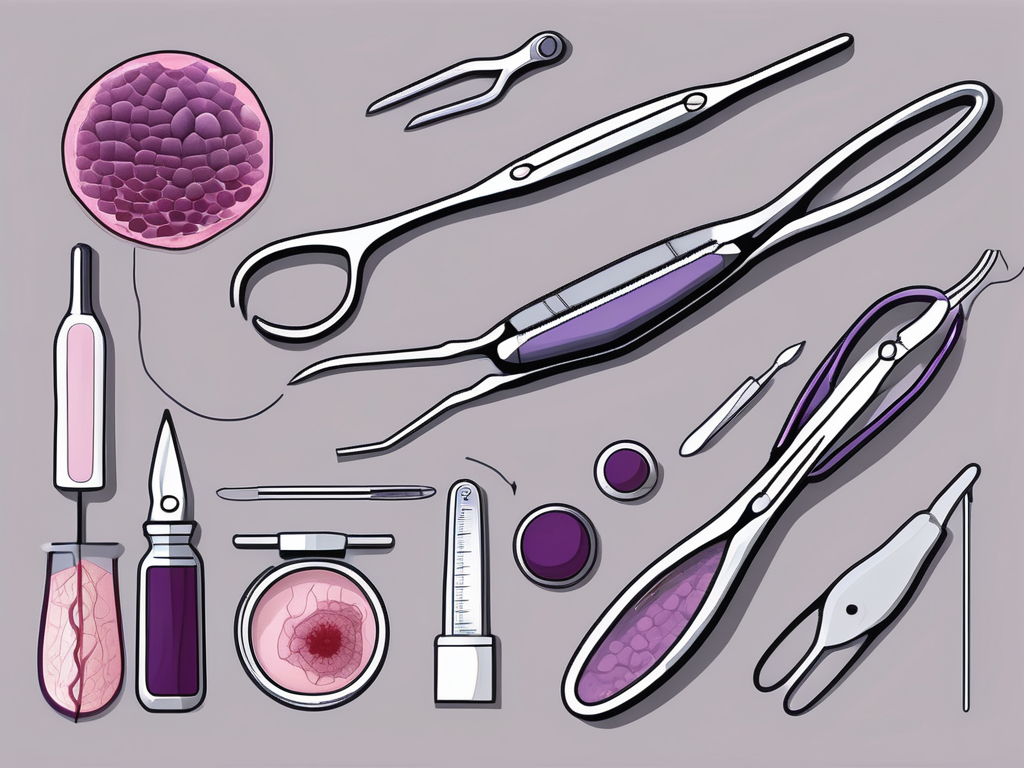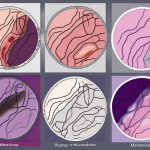This informative blog post offers a deep dive into the surgical management of primary skin cancer, emphasizing the importance of early detection and the array of treatment options available. It highlights basal cell carcinoma (BCC) and squamous cell carcinoma (SCC) as the most common types of skin cancer, underscoring the significance of recognizing early warning signs for prompt action. With a focus on various surgical techniques such as excisional surgery, Mohs micrographic surgery, and minimally invasive procedures, the article sheds light on the tailored approaches to effectively combat skin cancer. Additionally, it touches on the crucial role of reconstructive surgery post-cancer removal and the potential of adjuvant therapies to prevent recurrence. The post concludes by stressing the necessity of long-term follow-up and surveillance, encouraging readers to stay proactive in their skin health management. This guide is not only educational but also empowering, equipping readers with the knowledge to navigate their treatment journey with confidence.
Skin cancer is a serious condition that affects millions of people worldwide. The good news is that with early detection and proper treatment, the prognosis for most cases is excellent. In this article, we will explore the various surgical management options available for primary skin cancer, providing you with a comprehensive guide to help you navigate the complexities of this treatment journey.
Understanding the Different Types of Primary Skin Cancer
When it comes to skin cancer, knowledge is power. Understanding the different types of primary skin cancer can help you identify potential warning signs and take appropriate action. The two most common types of primary skin cancer are basal cell carcinoma (BCC) and squamous cell carcinoma (SCC).
Basal cell carcinoma (BCC) is the most prevalent type of skin cancer. It typically appears as a small, shiny bump on the skin. While BCC is usually found on areas exposed to the sun, such as the face, scalp, ears, and neck, it can also develop on other parts of the body. Although BCC rarely spreads to other parts of the body, it can cause local damage if left untreated.
Squamous cell carcinoma (SCC) is the second most common type of primary skin cancer. It often starts as a rough patch or a sore that fails to heal. SCC is commonly found on sun-exposed areas, including the face, ears, lips, and backs of the hands. However, it can also develop on other parts of the body, such as the genitals and inside the mouth. Unlike BCC, SCC has a higher risk of spreading to other areas of the body if not treated promptly.
Both basal cell carcinoma and squamous cell carcinoma require urgent medical attention. If you notice any suspicious skin changes, it is crucial to consult a healthcare professional for a thorough examination. Early detection and treatment can significantly improve the prognosis and minimize the potential for complications.
When diagnosing skin cancer, a healthcare provider will typically perform a visual examination of the affected area and may recommend a biopsy to confirm the diagnosis. A biopsy involves removing a small sample of the suspicious tissue for laboratory analysis. This procedure helps determine the type and stage of the skin cancer, guiding the appropriate treatment plan.
In addition to surgical intervention, other treatment options for primary skin cancer include radiation therapy, topical medications, cryotherapy (freezing the cancer cells), and photodynamic therapy (using light to destroy cancer cells). The choice of treatment depends on various factors, including the type, size, and location of the skin cancer, as well as the individual’s overall health.
Prevention is key when it comes to primary skin cancer. Protecting your skin from harmful UV radiation is crucial in reducing the risk of developing skin cancer. This includes wearing sunscreen with a high SPF, seeking shade during peak sun hours, wearing protective clothing, and avoiding tanning beds.
Regular self-examinations and annual skin checks by a dermatologist are also essential for early detection. By familiarizing yourself with your skin and monitoring any changes, you can play an active role in maintaining your skin health.
Remember, knowledge and awareness are powerful tools in the fight against primary skin cancer. Stay informed, protect your skin, and seek medical attention if you notice any suspicious changes. Your skin deserves the utmost care and attention to keep it healthy and cancer-free.
The Importance of Early Detection and Diagnosis
Early detection is key when it comes to successful treatment of primary skin cancer. Regular self-examinations and annual skin checks by a dermatologist are highly encouraged. If you notice any changes in the size, color, or shape of a mole or spot on your skin, or if you experience persistent itching, bleeding, or discomfort, it is crucial to seek medical evaluation promptly. Remember, the earlier skin cancer is diagnosed, the more treatment options are available.
Early detection and diagnosis of skin cancer can significantly improve the prognosis and increase the chances of successful treatment. Skin cancer is the most common type of cancer worldwide, and its incidence continues to rise. Therefore, it is essential to understand the importance of early detection and take proactive steps to monitor and evaluate any changes in your skin.
Regular self-examinations play a vital role in the early detection of skin cancer. By familiarizing yourself with your skin’s normal appearance, you can easily identify any changes that may occur. It is recommended to perform self-examinations at least once a month, carefully examining your entire body, including areas that are not exposed to the sun.
During a self-examination, pay close attention to any moles, freckles, or spots on your skin. Look for any changes in their size, shape, color, or texture. If you notice any new growths or lesions, it is important to have them evaluated by a dermatologist. Early detection of skin cancer can lead to prompt treatment, which can significantly improve the chances of a positive outcome.
In addition to self-examinations, annual skin checks by a dermatologist are highly recommended, especially for individuals at a higher risk of developing skin cancer. These include individuals with fair skin, a history of excessive sun exposure, a family history of skin cancer, or a weakened immune system.
During a skin check, a dermatologist will thoroughly examine your skin, looking for any suspicious lesions or growths. They may use a dermatoscope, a handheld device that magnifies the skin’s surface, to get a closer look at any suspicious areas. If necessary, the dermatologist may perform a biopsy, which involves removing a small sample of tissue for further examination under a microscope.
It is important to remember that skin cancer can present in various forms, including basal cell carcinoma, squamous cell carcinoma, and melanoma. Each type has its own characteristics and requires different treatment approaches. Early detection and diagnosis can help determine the type and stage of skin cancer, enabling healthcare professionals to develop an appropriate treatment plan tailored to your specific needs.
In conclusion, early detection and diagnosis of skin cancer are crucial for successful treatment outcomes. By regularly examining your skin and seeking medical evaluation for any concerning changes, you can increase the chances of detecting skin cancer at an early stage when treatment options are more effective. Remember, your skin is your body’s largest organ, and taking care of it includes being proactive in monitoring its health.
Exploring the Various Surgical Treatment Options
When it comes to surgical management of primary skin cancer, several treatment options exist depending on the type, size, and location of the lesion. These options may include excisional surgery, Mohs micrographic surgery, and minimally invasive surgical techniques.
· Excisional surgery :
Excisional surgery involves removing the cancerous lesion along with a margin of healthy tissue. This method is commonly used for smaller skin cancers. Your surgeon will carefully evaluate the extent of the cancer and determine the appropriate size of the excision. The removed tissue is sent to a laboratory for further examination to ensure complete removal of the tumor.
· Mohs micrographic surgery :
Mohs micrographic surgery is a highly specialized technique used for the treatment of larger, more aggressive skin cancers or lesions located in cosmetically sensitive areas. This procedure involves removing thin layers of tissue one at a time and examining them under a microscope. Mohs surgery offers the highest cure rate while minimizing the removal of healthy tissue.
· Minimally invasive surgical techniques :
Advancements in technology have led to the development of minimally invasive surgical techniques for primary skin cancer. These procedures often involve the use of laser or cryotherapy to carefully target and destroy cancer cells, leaving surrounding healthy tissue intact. Minimally invasive techniques are particularly useful for small, superficial skin cancers.
· Navigating the complexities of reconstructive surgery after skin cancer removal :
After the successful removal of primary skin cancer, reconstructive surgery may be necessary to restore the aesthetic appearance and function of the affected area. The complexity of the reconstruction will depend on various factors, including the size and location of the tumor. Your surgeon will work closely with you to develop a personalized reconstructive plan that minimizes scarring and optimizes cosmetic outcomes.
· The role of adjuvant therapies in preventing recurrence :
In some cases, additional treatments may be recommended to reduce the risk of cancer recurrence. Adjuvant therapies such as radiation therapy or topical chemotherapy can target any remaining cancer cells in the area surrounding the surgical site. Your healthcare team will assess the individual characteristics of your skin cancer and discuss the potential benefits of adjuvant therapies with you.
· Long-term follow-up and surveillance for patients with primary skin cancer :
Even after successful treatment, it is essential to maintain regular follow-up appointments with your healthcare provider. These appointments will allow for careful monitoring of your skin and the early detection of any signs of recurrence or new skin cancers. Your healthcare team will work collaboratively with you to develop a tailored surveillance plan to ensure your ongoing health and well-being.
In conclusion, surgical management plays a vital role in the treatment of primary skin cancer. By understanding the different types of skin cancer, the importance of early detection, and the various surgical treatment options available, you can make informed decisions about your healthcare journey. Remember, early detection, timely intervention, and long-term surveillance are key to achieving positive outcomes and maintaining your skin’s health. Stay proactive, stay protected, and take control of your journey to beat skin cancer!





